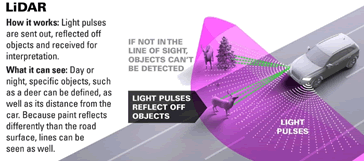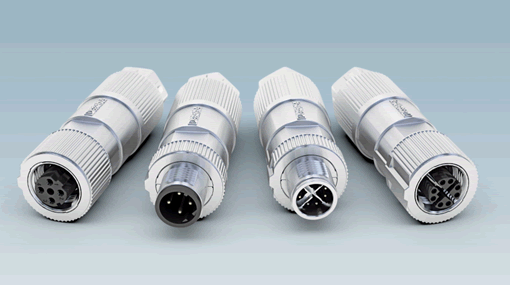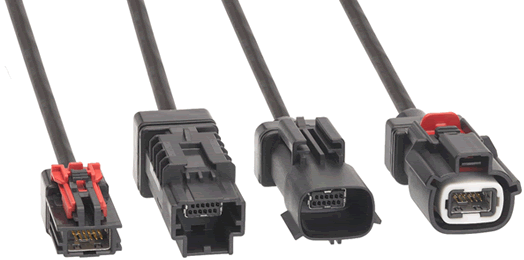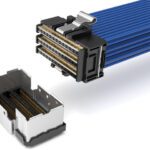As LiDAR Becomes a Dominant Automotive Application, Connectors Need to Adapt
Autonomous vehicles depend on this electronic sensing system. But has the connector industry been fully involved in its evolution?
By Terry Costlow, Contributing Editor
Cameras and radar have become commonplace on modern vehicles, and a surveying technology called LiDAR is getting a lot of attention. However, most product planners say that LiDAR will be only part of a larger mix of sensor technologies that will be needed when fully autonomous vehicles start seeing market acceptance.
LiDAR, a surveying technology that stands for Light Detection and Ranging, adds a laser to a conventional camera, which enables sensors to function somewhat like radar. Analyzing the returning laser light provides distance information that augments the camera’s standard imaging. The laser also helps the system provide higher resolution imagery at night and in rain or snow. Many vehicle planners feel those traits are needed for fully autonomous driving, and the system is being included in many of the autonomous vehicles that are being designed today.
Though many LiDAR systems currently use moving parts, there’s huge interest in emerging non-mechanical technologies that can survive in the harsh automotive environment. Automotive companies have aligned with several small companies that make solid-state LiDAR technologies, which aren’t yet ready for automotive applications.

Image courtesy of Delphi.
Delphi recently invested in Innoviz Technologies, an Israeli startup. Ford made a large investment in Velodyne, while ZF bought a 40% stake in Ibeo. Continental acquired Advanced Scientific Concepts. Analog Devices Inc. (ADI) acquired Vescent Photonics Inc.
Independent LiDAR suppliers are also gearing up to meet demand that’s expected to soar as autonomous vehicles start entering the market. They aren’t shy about building up expectations.
“We’re working with every single OEM,” said Louay Eldada, Quanergy’s CEO. “Everyone wants LiDAR. Our solid state LiDAR will be in production late this year.”
Other LiDAR suppliers are focused a bit more on the long term, since cameras, radar, and ultrasound sensors are effective for most advanced driver assistance systems now being designed into new vehicles. But researchers in the auto industry are already working on prototype vehicles that employ mechanical LiDAR systems. That will help prepare them for a transition to smaller packages for marketable vehicles.
“We’ve got products in development that target the post-2020 model year,” said Chris Jacobs, General Manager of Automotive Safety for ADI. “The products we have now are the size of a bread box – no one wants that on a production vehicle.”
Where are the Connectors?
Though LiDAR brings many technical advantages, most automakers won’t deploy LiDAR until solid-state modules become cost-effective. Adding the laser and some processing pushes pricing higher than the costs of other sensors, so LiDAR probably won’t be deployed in advanced safety systems before the transition to full autonomy. In this early phase, connectors aren’t a major design concern. Yet, they will undoubtedly be a key element in future designs, so connector companies are eager to be involved in the design and development process.
“It’s been difficult getting engineering face time with OEMs and Tier 1s,” said Nate Owens, associate product marketing manager at Phoenix Contact. “We’d like to have conversations about optimizing wire harnesses, but most engineers are currently happy to use standard connectors and cabling.”

Phoenix Contact aims to help LiDAR users optimize connections and wiring.
As LiDAR joins the mix of sensors, conventional wiring will undergo a major evolutionary step. The CAN links and other common connections in the wiring harness world will probably be joined by Ethernet, which provides far higher speeds than anything now used on the highways.
“No doubt, the architectures have to change,” said Mark Rettig, global marketing manager at Molex. “It won’t be simple, twisted-pair wiring any more. Speeds are going up from 100Mbits per second to six or more Gbits per second. Many sensors will probably be connected using Ethernet.”
The evolution will have many implications for connector suppliers. When high-resolution sensors are transmitting copious amounts of data, providing enough speed is only the price of admission to the marketplace.

Helping automakers maintain good signal integrity is a key factor for developers at Molex.
“One thing that has really come into play is signal integrity,” said Joe Falcone, new product development manager, vehicle networking solutions, at Molex. “Impedance matching has become important and we have to look at EMI and EMC to protect signal integrity. It’s a lot different from the past, when you put a connector on twisted copper and you were done.”
Reliability is also a critical factor for connectors. Shock and vibration levels are high, given the poor state of many roads. Connectors are often stuck behind bumpers or close to noisy engine compartments, where they’re exposed to the elements.
“Most LiDAR modules will be in harsh environments,” Owens said. “They’ll need to be fully water tight and match or exceed the standard requirements we have today. They’ll also need fully shielded, twisted pair cabling so there won’t be any crosstalk.”
Cooling also becomes a more important aspect in connector design. Automotive components always need to have broad temperature ranges so vehicles can be used in the Arctic or in deserts. That’s exacerbated by LiDAR, since the components themselves add a fair amount of heat.
“Cameras can generate a lot of heat because they have an LED,” Rettig said. “You’ve got to dissipate that heat or it can distort the picture. Connectors have to provide high speed, you have to look at the system from end to end, from chip to chip.”
The best way to design a system that takes all of these factors into account is to include connector companies from the very start. When individual components operate in harmony, the end product and performance are that much more dependable. In a system designed for safety, nothing is more important.
Recently posted:
[related_posts limit=”10″]
- State of the Industry: 2022-2023 Connector Sales - April 16, 2024
- Amphenol is On a Roll - April 2, 2024
- Nicomatic Proves That Two Heads are Better Than One - March 26, 2024






